Transcription
The Restoring Education and Learning (REAL) Act (S. 1074)
The REAL Act--introduced by Senators Schatz, Lee, and Durbin--would restore Pell Grant eligibility to provide prisoners access to higer education and lower our corrections spending.
For more than 40 years, the Pell Grant program has helped put post-secondary education in reach for millions of students. Post-secondary education has a big impact on students' economic security and job prospects--it lowers unemployment rates, boosts students' earning potential, and opens up career paths. For these same reasons, post-secondary education is also highly effective at lowering recidivism rates for incarcerated individuals.
Studies have shown that recidivism rates drop significantly for people who earn a post-secondary degree. A RAND report found that people who participate in postsecondary education programs while in prison on average recidivate at a rate that is 48 perfect less than people who do not participate in such programs. These degrees help inmates overcome the steep employment obstacles that they face after they are released and help them reintegrate into their communities. In addition, a Vera Institute of Justice and Georgetown Center on Poverty and Inequality report found that on average, "lifting the ban on Pell Grants for people in prison would increase state employment rates of formerly incarcerated workers who participate in a postsecondary program by 4.7 percentage points, or nearly 10 percent." This would, in turn, boost "the combined earnings of people recently released from prison by roughly $45.3 million in just the first year after release."
However, in 1994, incarcerated individuals lost access to Pell grants. As a result, the number of education programs in prisons fell from over 350 in 1990 to only 12 in 2005. The loss of post-secondary education programs for prisoners was short-sighted because these programs reduced costs and improved public safety more efficiently than incarceration. During the first three years after an individual is released, each dollar spent on funding prison education programs reduces incarceration costs by $4 to $5. States would save an average of $7.6 million in incarceration costs each year in which people in prison had access to Pell Grants while incarcerated. Furthermore, if half of the Pell-eligible prison population participated in postsecondary education while in prison, states would save a combined $365.8 million per year in prison costs.
Restoring Pell grants for incarcerated individuals would lower recidivism, reduce incarceration costs, improve public safety, and give people a chance to rebuild their lives.
The Act would amend section 401(b) of the Higher Education Act of 1965, 20 U.S.C 1070a(b), by striking paragraph (6), which bars Pell Grant eligibility for people incarcerated in federal and state prisons
The Act would take effect in the upcoming academic year.
The REAL Act has been endorsed by a diverse group of stakeholders, including the Association of State Correctional Administrators, American Correctional Association, Correctional Education Association, American Council on Education, Association of American Colleges and Universities, National Association of Independent Colleges and Universities, American Association of Community Colleges, Association of Community College Trustees, Council for Christian Colleges and Universities, National Association for College Admission Counseling, Institute for Higher Education Policy, The Education Trust, Justice Action Network, Freedom Works, U.S Chamber of Commerce, FAMM, Equal Justice Initiative, Sentencing Project, Coalition of Juvenile Justice, NAACP Legal Defense and Education Fund, National Urban League, The Leadership Conference on Civil and Human Rights, ACLU, #cut50, Drug Policy Alliance, Prison Fellowship, Law Enforcement Leaders to Reduce Crime & Incarceration, and The Law Enforcement Action Partnership.
If you have any questions or your boss would like to sign on, please contact Trelaine Ito in Senator Schatz's office at trelaine_ito@schatz.senate.gov.
REAL Act: FAQs
Q: When were incarcerated people barred from receiving Pell Grants?
A: In the 1994, the Violent Crime Control and Law Enforcement Act amended the Higher Education Act and completely eliminated Pell grant eligibility for people incarcerated in state or federal penal institutions.
Q: Why where incarcerated people barred from Pell eligibility?
A: Many voices, such as then-Texan Senator Kay Bailey Hutchinson, argued that providing Pell grants to prisoners displaced more "deserving" students from the program. But in fact, in any given year, sufficient award funds are available to ensure that all eligible students attending eligible institutions receive a Pell grant. Therefore, the number of prisoners receiving a grant does not affect the number of grants available to non-incarcerated students.
Q: What percentage of Pell Grant recipients were incarcerated?
A: Between 1993 and 1994, out of 4 million Pell grant recipients, 23,000 were incarcerated.
Q: How much of total Pell Grant funding went to incarcerated people?
A: Between 1993 and 1994, of the $6 billion in total Pell grants, $35 million went to prisoners, representing less than 1% of Pell grants that year.
Q: What additional sources of funding can prisons use for higher education programs?
A: State facilities can use state funding as part of their overall corrections spending. However, a study conducted by RAND Corporation on behalf of the Bureau of Justice Assistance found that during the economic recession, states reduced funding for prison education programs by between 6% and 20%. A fraction of funding from the Workforce Innovation and Opportunity Act and the Perkins Career and Technical Education Act can be used to pay for corrections education, but they are more limited to literacy and basic skills/job training, not degrees.
Q: What is the estimated Pell-eligible population?
A: A Vera Institute of Justice and Georgetown Center on Poverty and Inequality report found an estimated total of 462,690 people in state prisons who would be Pell-eligible.
Q: What would be the cost increase for the Pell program?
A: The Vera and Georgetown report notes that even if "all eligible people in state prisons receive an award in a single year, total Pell Grant costs would rise less than 10 percent." However, decisions about eligibility and participation are made at the programmatic level, based on factors like capacity (available professors, available class space, etc.) and funding.
The REAL Act (S. 1074) has been endorsed by the following organizations:
National Organizations
#cut50
American Association of Community Colleges (AACC)
American Bar Association (ABA)
American Civil Liberties Union (ACLU)
American Conservative Union (ACU)
American Correctional Association (ACA)
American Council on Education (ACE)
American Probation and Parole Association
Association of American Colleges & Universities (AAC&U)
Association of Benedictine Colleges and Universities
Association of Catholic Colleges and Universities
Association of Community College Trustees
Association of Independent Colleges of Art & Design
Association of Jesuit Colleges & Universities
Association of Prosecuting Attorneys (APA)
Association of State and Federal Directors of Correctional Education
Brennan Center for Justice
Business Forward, Inc.
Business Roundtable
Campaign for Youth Justice
CAN-DO Foundation
Catholic Charities USA
Center for American Progress (CAP)
Center for Law and Social Policy (CLASP)
Center for Public Justice
Church of Scientology, National Affairs Office
Citizens United for Rehabilitation of Errants (CURE)
Coalition for Juvenile Justice (CJJ)
College and Community Fellowship
Correctional Education Association
Correctional Leaders Association (CLA)
Council for Christian Colleges and Universities (CCCU)
Drug Policy Alliance
Due Process Institute
The Education Trust
Equal Justice Initiative (EJI)
Faces and Voices of Recovery
Faith & Freedom Coalition
FAMM
FedCURE
Formerly Incarcerated College Graduates Network
FreedomWorks
Friends Committee on National Legislation (FCNL)
From Prison Cells to PhD
Generation Progress
GTL
Higher Learning Advocates (HLA)
Innocence Project
Institute for Higher Education Policy (IHEP)
Interfaith Action for Human Rights (IAHR)
International Community Corrections Association
Jewish Council for Public Affairs
Jesuit Conference, Office of Justice and Ecology
JPMorgan Chase
Justice Action Network
Justice for Families
Justice Policy Institute
JustLeadershipUSA
The Law Enforcement Action Partnership (LEAP)
Law Enforcement Leaders to Reduce Crime & Incarceration
The Leadership Conference on Civil and Human Rights
Legal Action Center
NAACP
NAACP Legal Defense and Education Fund (LDF)
NASPA -- Student Affairs Administrators
National Alliance of Faith and Justice (NAFJ)
National Association for College Admission Counseling (NACAC)
National Association of Criminal Defense Lawyers (NACDL)
National Association of Independent Colleges and Universities (NAICU)
National Council on Independent Living (NCIL)
National Criminal Justice Association (NCJA)
National District Attorneys Association (NDAA)
National Employment Law Project (NELP)
National Urban League
NETWORK Lobby for Catholic Social Justice
Operation Restoration
Prison Fellowship
R Street
Safer Foundation
The Sentencing Project
Second Chance Educational Alliance, Inc.
Service Employees International Union (SEIU)
Southeast Asia Resource Action Center (SEARAC)
Students for Sensible Drug Policy (SSDP)
T'ruah: The Rabbinic Call for Human Rights
Third Way
Unitarian Universalists for Social Justice (UUSJ)
United Negro College Fund (UNCF)
Unlock Higher Education Ed Coalition
U.S. Chamber of Commerce
Vera Institute of Justice
Verizon
Young Invincibles
State Organizations
Bard Prison Initiative (New York)
Bennington College's Prison Education Initiative (Vermont)
Blue Mountain Community College (Oregon)
Center for Community Alternatives (New York)
Center for Correctional Education Research (Texas)
Chemeketa Community College (Oregon)
The City University of New York (CUNY) (New York)
The Commission on Independent Colleges & Universities in New York (New York)
Detroit Regional Chamber (Michigan)
Hudson Link for Higher Education (New York)
Lee College (Texas)
Michigan Department of Corrections (Michigan)
Middle Ground Prison Reform (Arizona)
Minnesota County Attorneys Association (MCAA) (Minnesota)
Moreau College Initiative, Notre Dame, Indiana (Indiana)
Mott Community College (Michigan)
Mount Wachusett Community College (Massachusetts)
Oregon Department of Corrections (ODOC) (Oregon)
Pennsylvania District Attorneys Association (PDAA) (Pennsylvania)
Portland Community College (Oregon)
The Prison Scholar Fund (Washingon)
Rappahannock Community College (Virginia)
Root & Rebound (California)
Salt Lake Community College (Utah)
Shorter College (Arkansas)
Tracy Andrus Foundation (Texas)
Treasure Valley Community College (Oregon)
University of Maine at Augusta (Maine)
University of Maine System (Maine)
Utah Department of Corrections (Utah)
W. Hayward Burns Institute (California)
Women Against Registry (Missouri)
York College, Nebraska (Nebraska)
Dear Chairman Blunt and Ranking Member Murray:
As the Subcommittee on Labor, Health and Human Services, Education, and Related Agencies considers funding for fiscal year (FY)2021, we respectfully ask that you support correctional education and education opportunity by restoring access to Pell grants for the incarcerated.
Empirical research demonstrates that postsecondary correctional education is greatly needed, has tremendous effectiveness, and saves taxpayers money. Studies demonstrate that postsecondary correctional education improves the atmosphere in prisons, increases successful reentry, increases employment after release, and decreases criminal behavior. For example, a study by the Rand Corporation found that correctional education participants recidivate at a rate that is 48% lower than those who do not participate. A 2014 study in Minnesota found that earning a postsecondary degree while in prison could decrease re-arrest by 14% and prison return by 24%. In addition, a 2019 report by the Vera Institute of Justice and Georgetown University Center on Poverty and Inequality estimated that restoring Pell for people in prison would increase state labor force participation rates of formerly-incarcerated workers by nearly 10% and dramatically boost their earnings after release by about $45.3 million in the first year alone, as well as save states a combined $365.8 million a year on incarceration costs. Given that the average annual cost of incarceration is between $25,500 and $26,000 per prisoner and that 40% of formerly-incarcerated people return to prison within 3 years, providing higher education within prisons promises to be a cost-effective investment of taxpayer dollars.
Restoring Pell Grants to the incarcerated is a bipartisan effort because it strengthens communities, improves reentry, promotes economic well-being, increases labor force participation, and meets workforce demands. This is why over ninety progressive and conservative organizations support
_____________________________________
^1 Lois M. Davis, Robert Bozick, Jennifer L. Steele, Jessica Saunders, Jeremy N. V. Miles, "Evaluating the Effectiveness of Correctional Education," (Rand Corporation, 2013), https://www.bja.gov/Publications/RAND Correctional Education-Meta Analysis.pdf.
^2 Grant Duwe and Valeria Clark, "The Effects of Prison-Based Educational Programming on Recidivism and Employment," (The Prison Journal, 2014). https://journals.sagepub.com/doi/10.1177/0032885514548009
^3 Patrick Oakford, Cara Brumfield, Casey Goldvale, Laura Tatum, Margaret diZerega, and Fred Patrick, "Investing in Futures: Economic and Fiscal Benefits of Postsecondary Education in Prison," (Vera Institute of Justice and Georgetown Center on Poverty and Inequality, 2019). https://www.vera.org/publications/investing-in-futures-education-in-prison.
^4 Schmitt, J., Warner, K., & Gupta, S. (June 2010). The High Budgetary Cost of Incarceration. Washington, DC: Center for Economic and Policy Research,
^5 Pew Center on the States (April 2011). State of Recidivism: The revolving Door of America's Prisons. Washington, DC: The Pew Charitable Trusts
legislation to restore Pell Grant eligibility for incarcerated individuals by removing the Pell ban. In addition, both the President's FY 2021 Budget and the Bipartisan Policy Center's Higher Education Taskforce included Pell restoration for the incarcerated as key policy recommendations. We request the following bill language to remove the prohibition on Pell grant eligibility for the incarcerated during FY 2021 to provide time to the authorizing committee to enact a permanent fix:
Sec. In order for the Department of Education to expand access to postsecondary correctional education programs, which significantly reduce recidivism, help break down racial barriers that are a common cause of disciplinary problems in the prison system, and increases access to employment for individuals who have been incarcerated, section 401(b) of the HEA (20 U.S.C. 1070a(b)) is amended by -
(1) striking paragraph (6);
(2) redesignating paragraph (7) as paragraph (6); and
(3) in paragraph (2) (A) (ii), by striking "(7)(B)" and inserting "(6)(B)".
Promoting successful reentry has been a bipartisan effort. We thank you for your consideration of this request to restore Pell Grant eligibility for the incarcerated. It is a smart federal investment that makes communities safer and our country stronger while reducing taxpayer costs.
Sincerely,
BRIAN SCHATZ
United States Senator
KEVIN CRAMER
United States Senator
CHRISTOPHER S. MURPHY
United States Senator
SHERROD BROWN
United States Senator
TAMMY DUCKWORTH
United States Senator
RICHARD BLUMENTHAL
United States Senator
CORY A. BOOKER
United States Senator
SHELDON WHITEHOUSE
United States Senator
EDWARD J. MARKEY
United States Senator
MICHAEL F. BENNET
United States Senator
CHRISTOPHER A. COONS
United States Senator
KAMALA D. HARRIS
United States Senator
BENJAMIN L. CARDIN
United States Senator
JEFFREY A. MERKLEY
United States Senator
CHRS VAN HOLLEN
United States Senator
Other posts by this author
|
2023 may 31

|
2023 mar 20
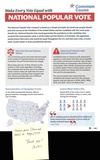
|
2022 aug 23

|
2022 aug 23

|
2022 aug 23

|
2022 aug 23

|
More... |


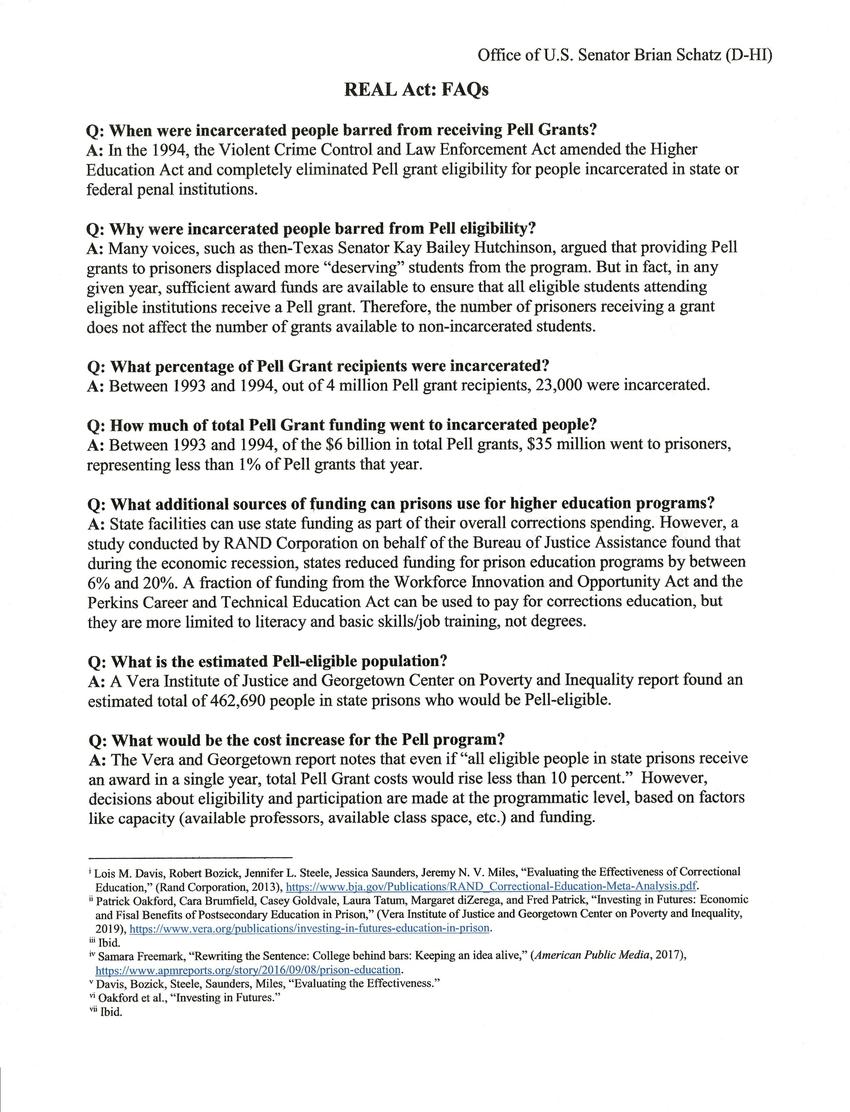
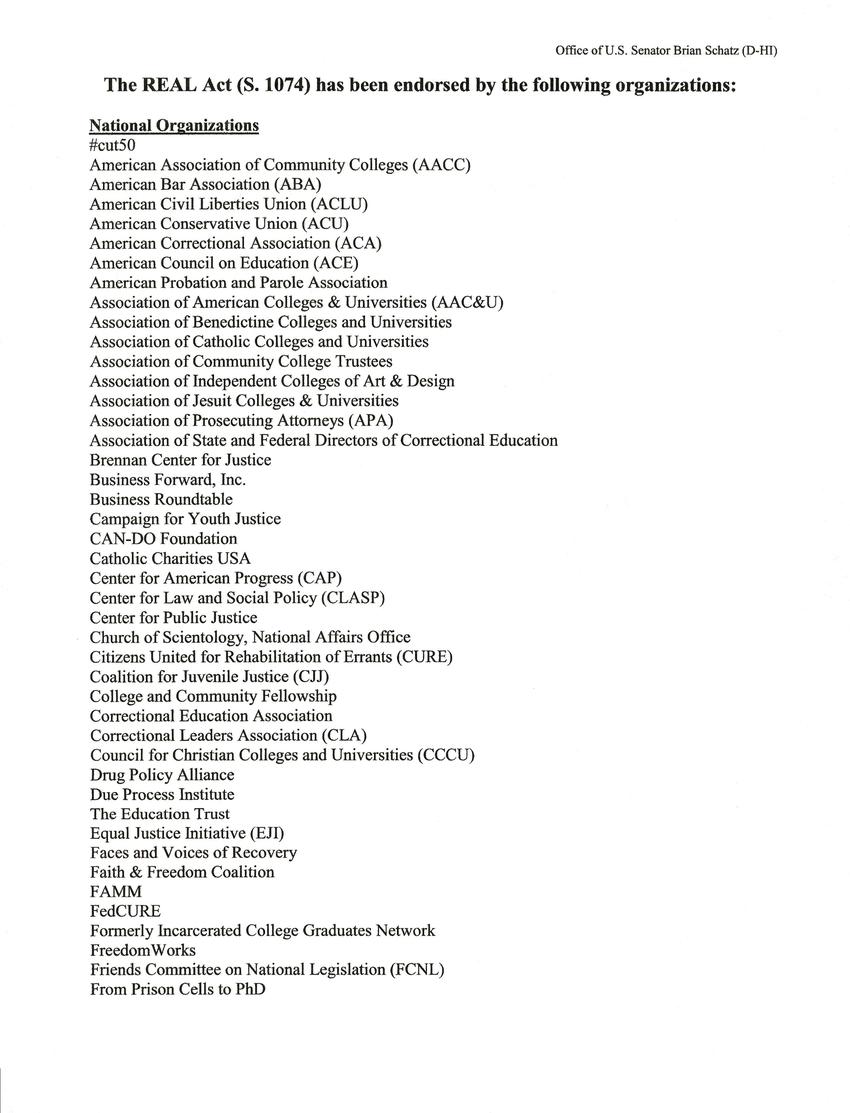
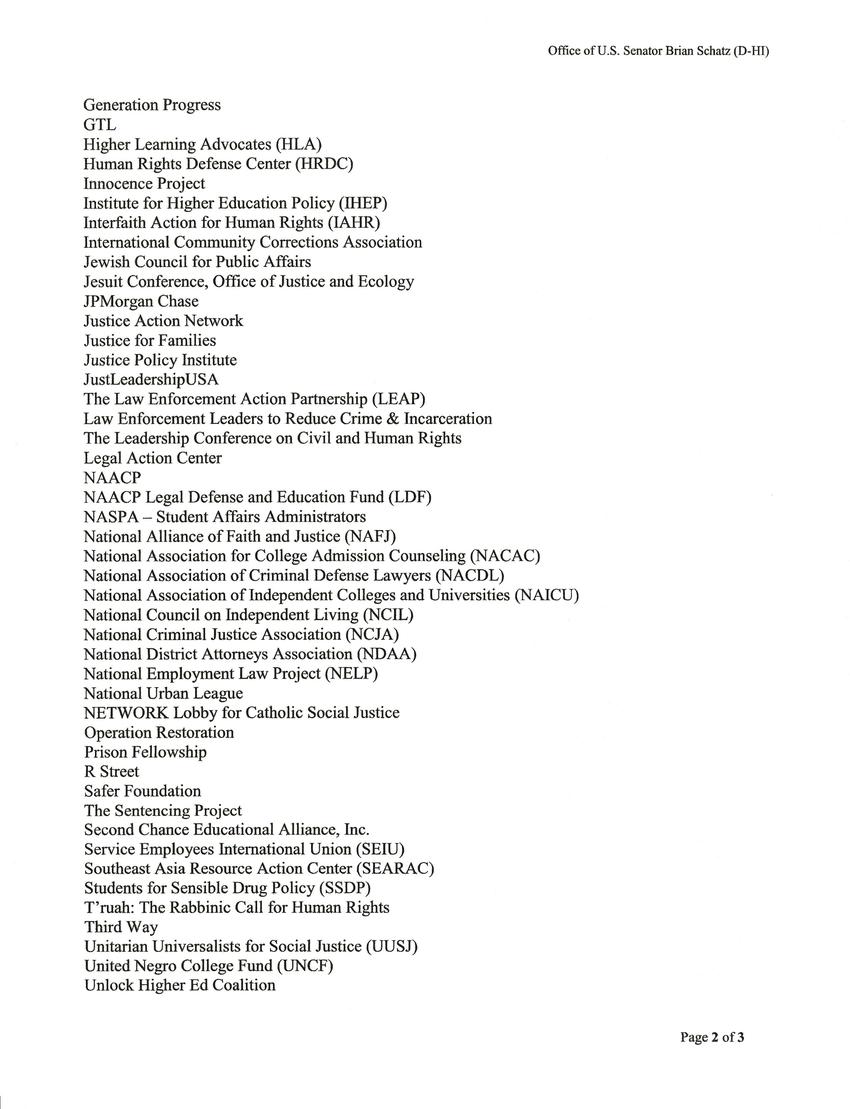
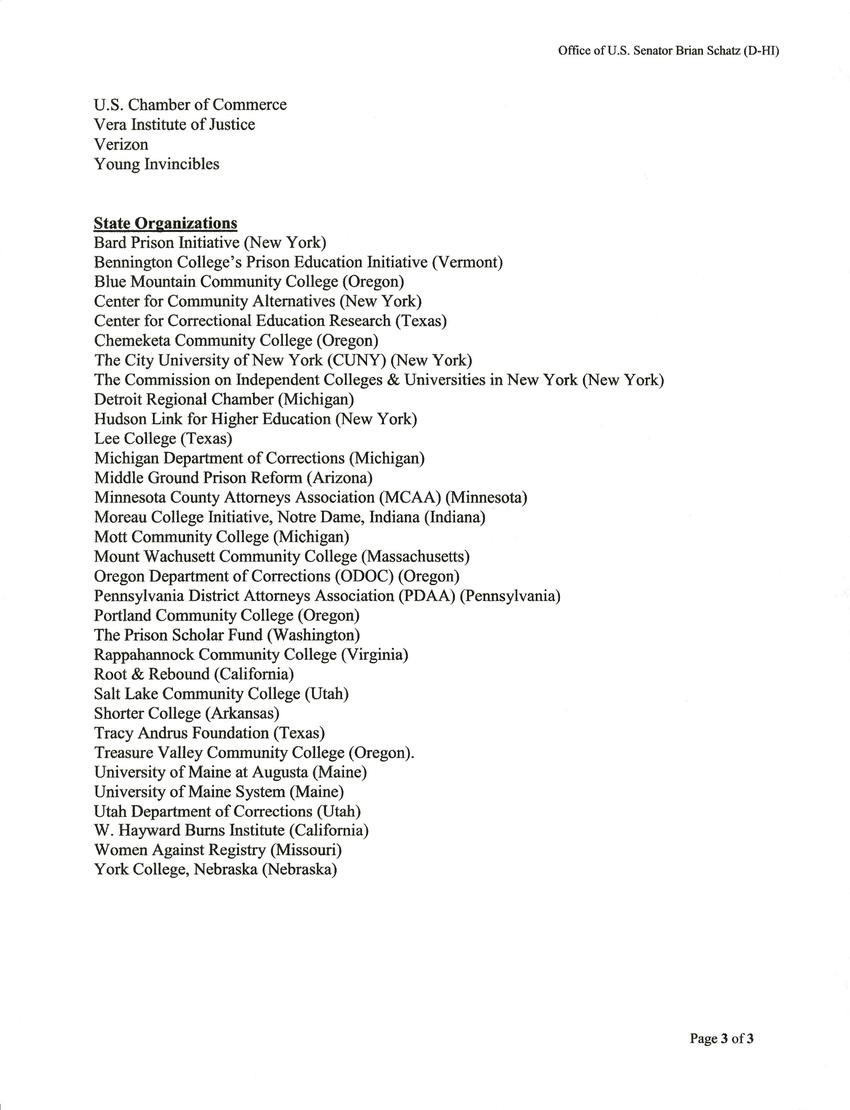
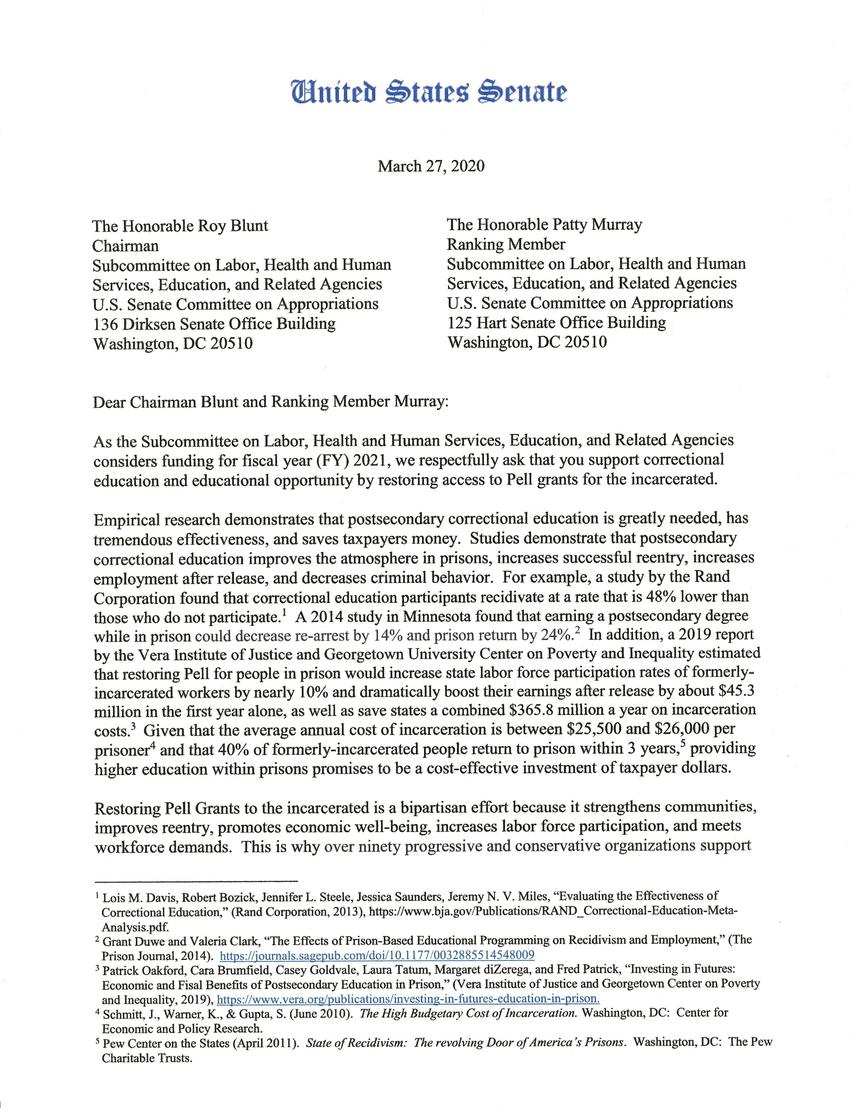
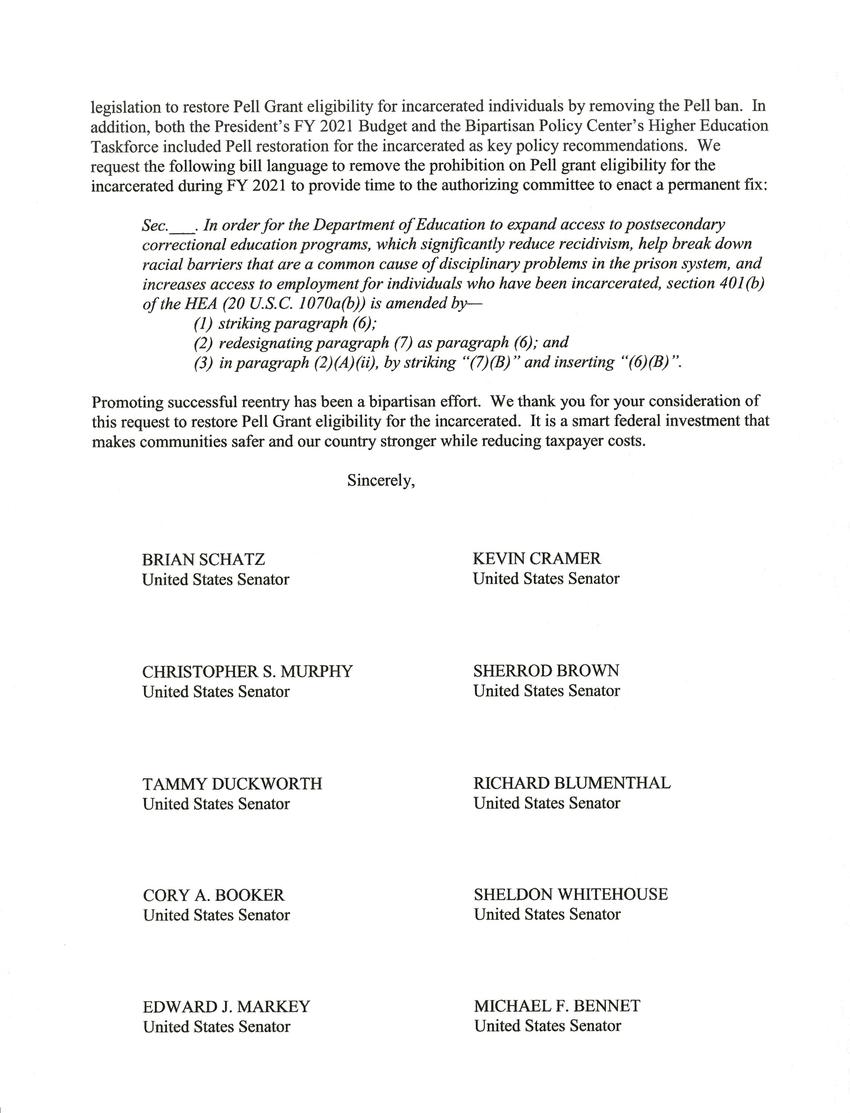
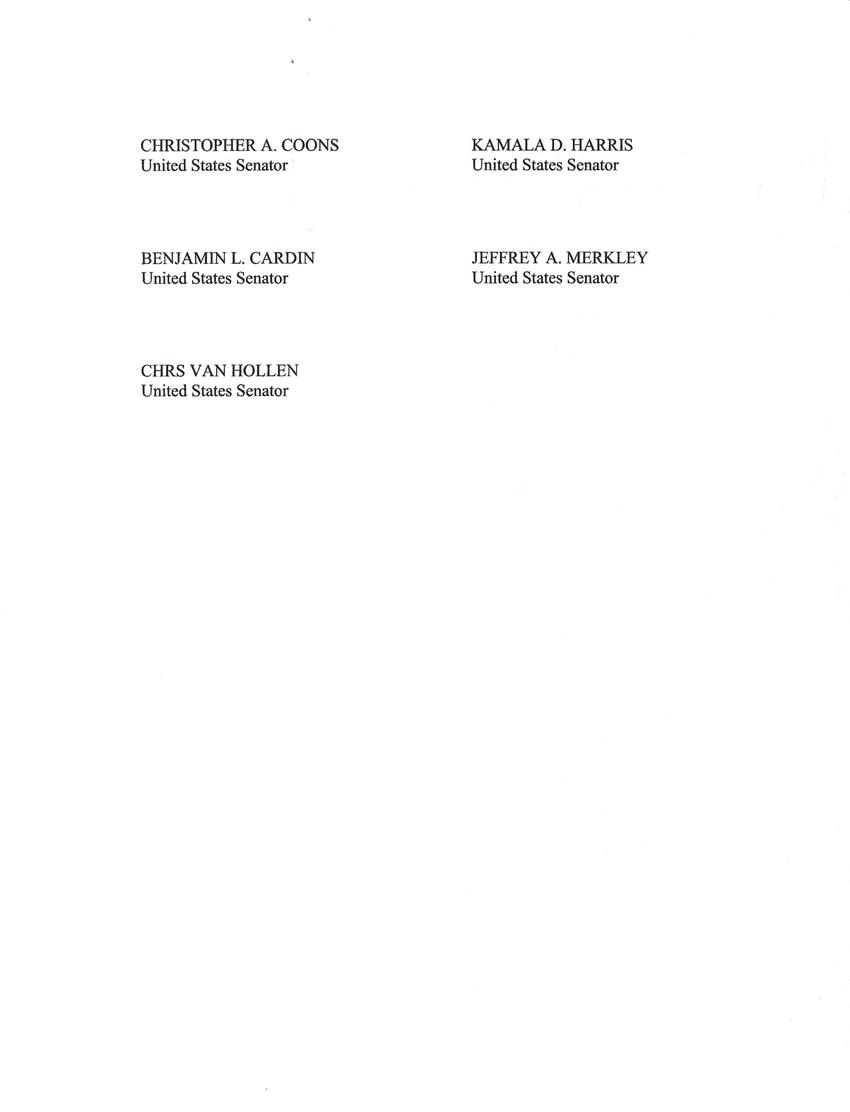

Replies